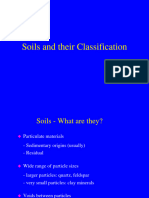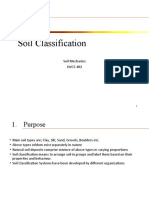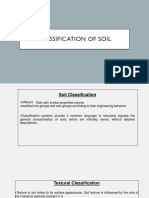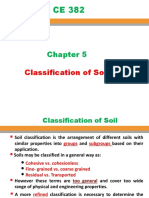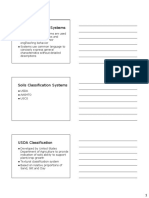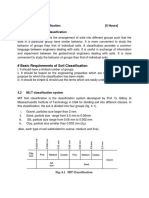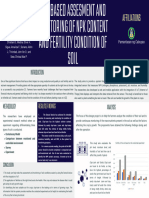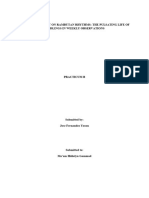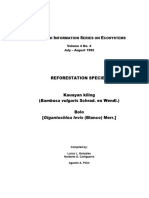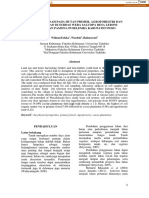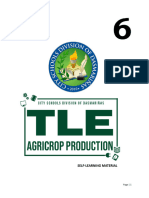0% found this document useful (0 votes)
26 views52 pagesLecture # 4
The document discusses soil classification, emphasizing the need for categorizing soils based on their engineering properties for effective use in construction and foundation projects. It outlines various classification systems, including the Unified Soil Classification System and the AASHTO system, detailing their methodologies and criteria. Additionally, it highlights the importance of understanding soil behavior through index properties like particle size and plasticity characteristics.
Uploaded by
Zulfiqar AliCopyright
© © All Rights Reserved
We take content rights seriously. If you suspect this is your content, claim it here.
Available Formats
Download as PDF, TXT or read online on Scribd
0% found this document useful (0 votes)
26 views52 pagesLecture # 4
The document discusses soil classification, emphasizing the need for categorizing soils based on their engineering properties for effective use in construction and foundation projects. It outlines various classification systems, including the Unified Soil Classification System and the AASHTO system, detailing their methodologies and criteria. Additionally, it highlights the importance of understanding soil behavior through index properties like particle size and plasticity characteristics.
Uploaded by
Zulfiqar AliCopyright
© © All Rights Reserved
We take content rights seriously. If you suspect this is your content, claim it here.
Available Formats
Download as PDF, TXT or read online on Scribd
/ 52




